Contents
If you’ve been on LinkedIn lately, you’ve probably seen a lot of suspiciously elaborate comments that don’t really seem to add anything. Have people all of a sudden become incapable of original thought? No, these comments are written by AI, with the original post as input.
That’s also why they mostly seem to summarize what’s already been said in the original post. It’s just slightly smarter spam, courtesy of tools like ChatGPT and other LLMs, sometimes with the help of a browser extension.

Once you know what to look for, you’ll start seeing these types of comments everywhere.
Case in point, here are some real examples from LinkedIn:
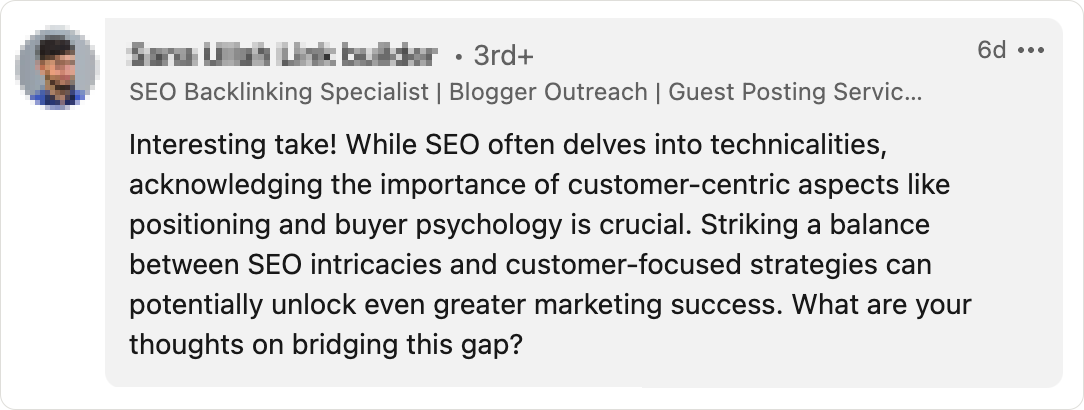
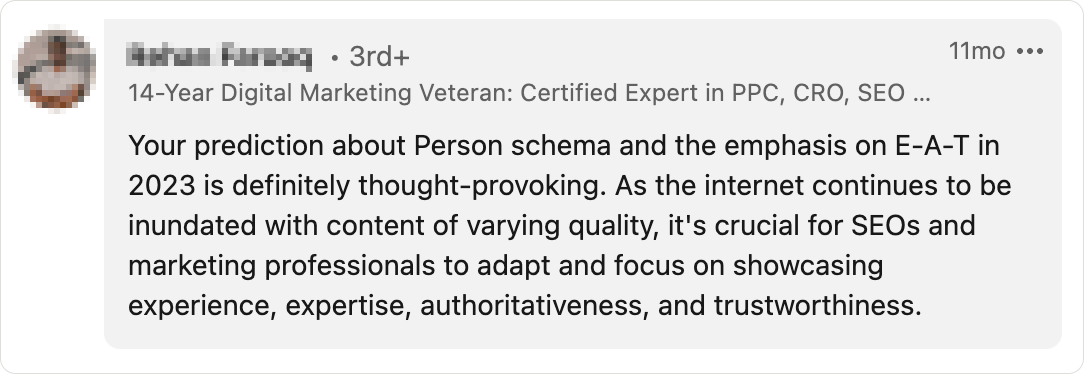
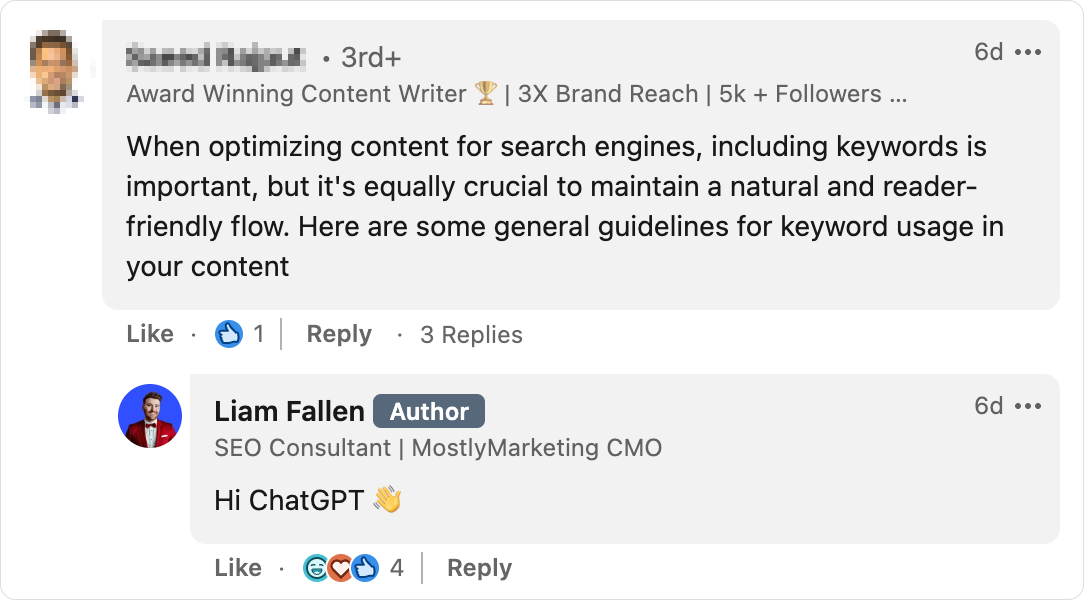
And here we have some spam on spam action, because why not?
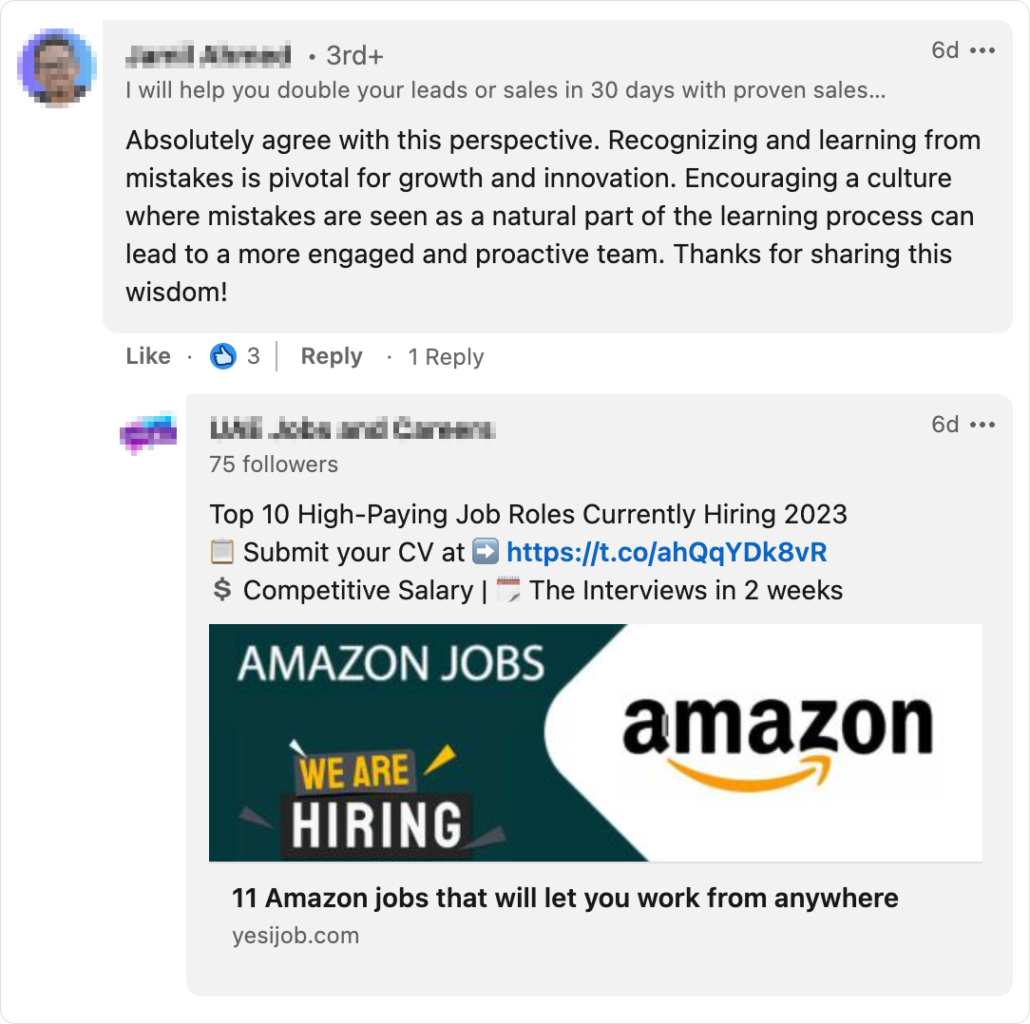
These AI-generated comments are not necessarily created by spam bots. Many are probably just normal people trying to automate engagement and networking.
But as Lily Ray said there, can we not? Please? Pretty please?
Where’s this coming from?
It’s become easy to develop tools for generating comments thanks to various affordable APIs and open source LLMs out there. OpenAI is the one everyone knows, but there are others as well. A decent prompt plus original content in, and out comes your artificial comment.
Even if you just wanted to just use your regular ChatGPT account it would still be quick, but we’re guessing the bulk of these comments come from purpose-built tools.
Do a Google search for “one-click ai comments” and you’ll quickly see there’s a bunch of tools and browser plugins for generating AI replies and comments.
They’re marketing themselves as creating genuine engagement and authentic comments, growing social footprints, and a bunch of other euphemisms for “spamming the hell out of social media.”
Here’s a snapshot from a Google search. The top result actually seems to be a general AI summarization tool, but after that it’s pretty obvious what the deal is:

A word for the wise, the A in AI is short for “artificial,” not “authentic.”
Microsoft, the ouroboros
It’s somewhat ironic that LinkedIn is owned by Microsoft, the largest investor in OpenAI, whose GPT large language models have been in the vanguard of generative AI for some time now and widely popularized by ChatGPT.
Those are the same OpenAI GPT models that power much of Microsoft’s various Copilot products, and GPT APIs offered through their own Azure platform.
Oh, and it’s highly likely that OpenAI technology powers several of these AI commenting tools.
We’re sure that LinkedIn and Microsoft are working hard on combating AI spam, but they are in a way fighting themselves. The Microsoft ouroboros, eating its own AI-generated tail.
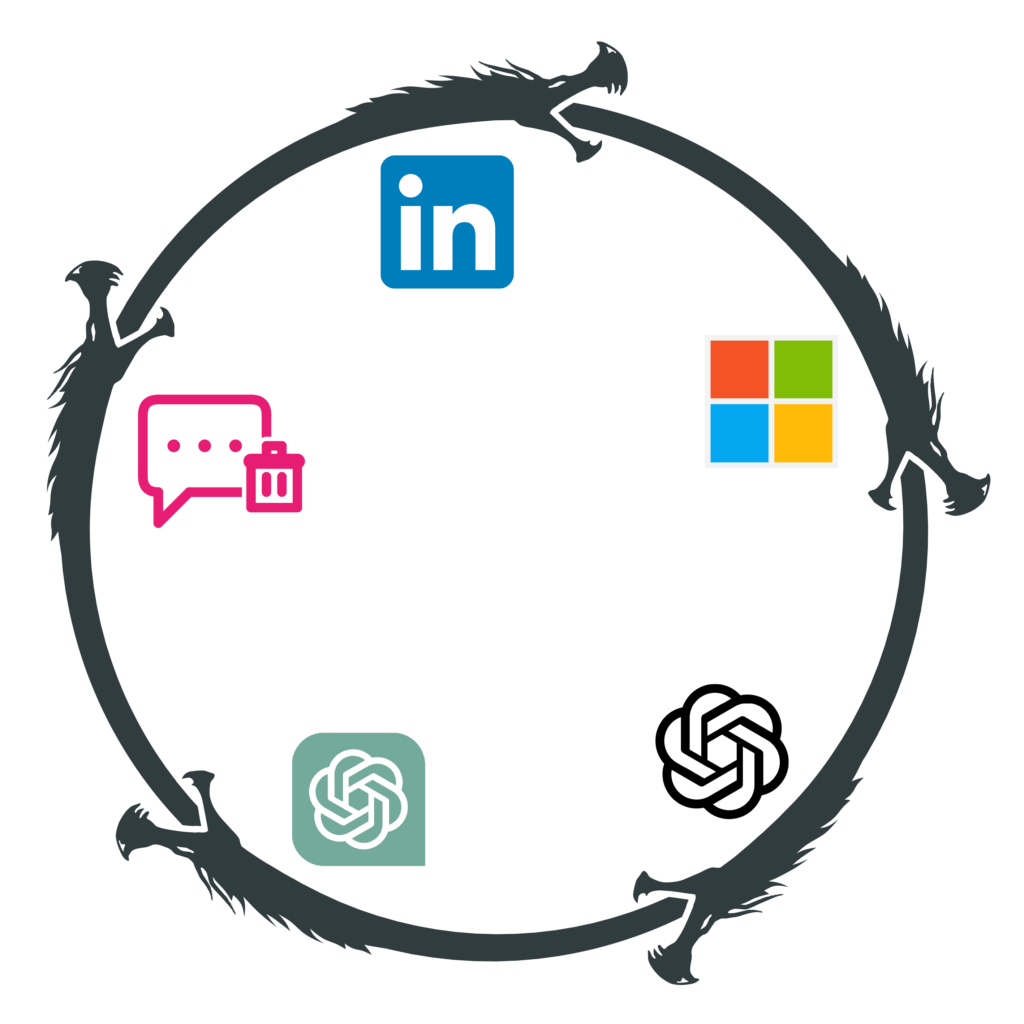
Wait, quick side note, is this AI mansplaining?
Just a side note, but let’s see: A lot of these AI-generated comments are by men (or bots), often regurgitating what someone presumably more knowledgeable just said in slightly different words…
… and if that original poster is a woman, doesn’t that start to sound a bit like mansplaining?
One-click, automated mansplaining. Just what we needed more of.
Can content filtering and moderation stop it?
Probably not entirely. It’s an arms race between spammers and the platforms they operate on.
We here at Besedo make our living from content moderation and related services, so we know how challenging it can be at scale. And LinkedIn has over a billion users worldwide.
But as we said, people are getting annoyed.
For context, Tim Soulo is the CMO of Ahrefs, a company that knows a bit about operating at scale (it’s a widely used online SEO tool that does a lot of crawling and analysis on the backend). And that idea isn’t half bad. Throttling of some kind could definitely be part of a solution.
Ideally any AI-generated posts and comments should be detected and blocked automatically if the platform you’re on wants genuine content and conversations. And it needs to be fast and efficient.
An automated attack on the integrity of a social platform requires an automated response.
And this is easier said than done, because AI-generated spam comments will over time get increasingly difficult to discern from comments written by humans. It’s already difficult to tell the difference sometimes, even for a human reader.
Generative AI and LLMs are cool, AI spam is not
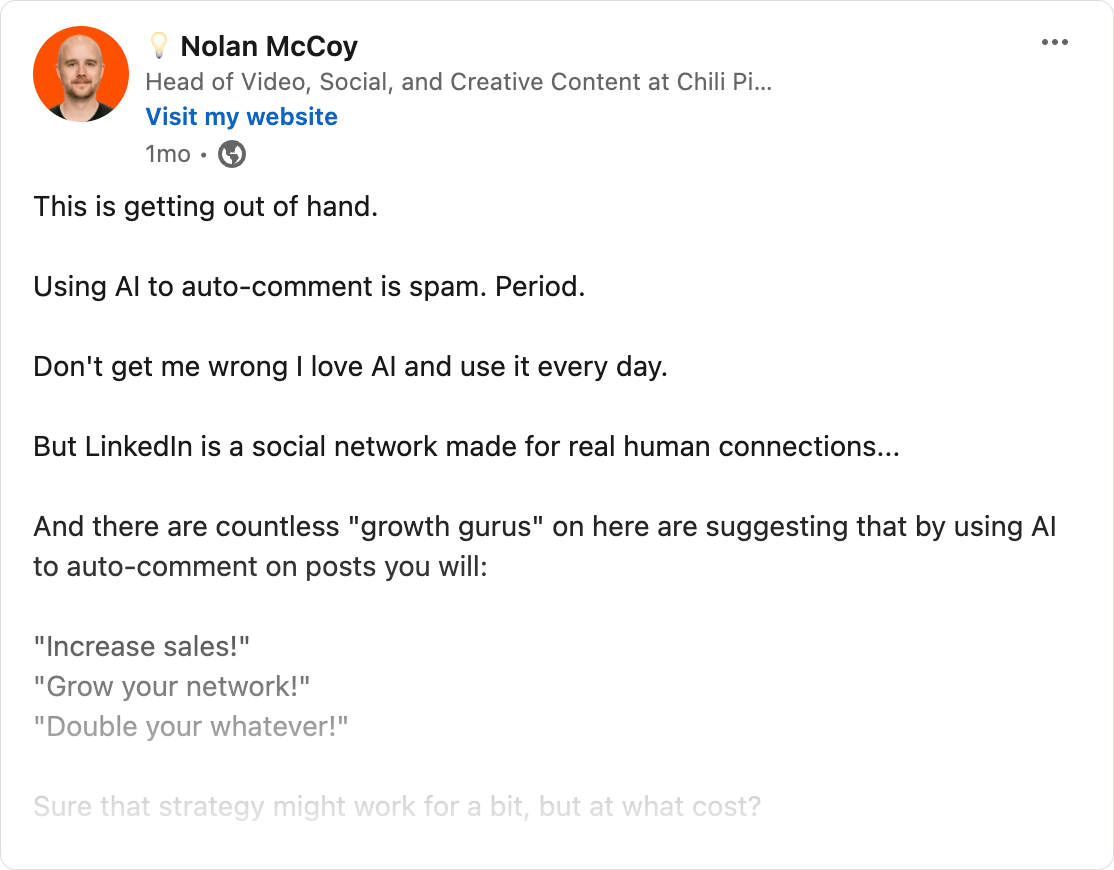
What’s the end game here? A bunch of AI comments on AI posts and nobody the wiser? No human connection?
We love tools like ChatGPT and other AI enhancements that are being incorporated everywhere. OpenAI and companies like Microsoft, Google and Anthropic are doing incredible things with LLMs and are taking huge steps forward seemingly every month.
These AI tools and services are super useful for many things. But using them for fake engagement—especially on platforms where you are supposed to be building genuine and professional connections—seems pretty counterproductive.
One-click AI comments on LinkedIn, X, or any other social platform, will simply poison the water for everyone.
Ahem… tap, tap… is this thing on? 🎙️
We’re Besedo and we provide content moderation tools and services to companies all over the world. Often behind the scenes.
Want to learn more? Check out our homepage and use cases.
And above all, don’t hesitate to contact us if you have questions or want a demo.


